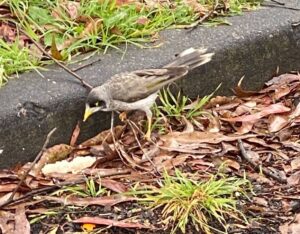Update Native Pruning
About eighteen months ago Don visited the Cumberland State Forest Nursery in Sydney and talked to Steve Sullivan, Operations Manager, State Forest Nurseries about renovation pruning of native plants. They looked at a fifteen-year-old Grevillea ‘Honey Gem’, and an old Callistemon ‘Candy Pink’. Both plants had been cut right back to wood around 50mm (2") thick. Burke’s Backyard recently made a return visit to the nursery to find out whether those plants survived or not. Amazingly, they have not only survived but they have rejuvenated and are flowering prolifically. If you have old grevilleas or bottlebrushes that are too woody and open, Steve recommends that you consider renovation pruning, which he says is successful in 90% of cases.
Grevillea ‘Honey Gem’
A semi-tropical, tall growing grevillea to 3-5m (10-15′) with golden yellow, bird attracting flowers. It is a hybrid between Grevillea banksii and Grevillea pteridifolia. Although tall growing it can be kept between 2-3m (6-10′) tall with regular pruning. It has flowers for most of the year. It is at its best from the Coffs Harbour area and north although it will grow in Sydney.
Callistemon ‘Candy Pink’
An erect shrub to around 3-5m (10-15′) tall, with an open form. It has light green narrow leaves with pink new growth. The flowers are pink ageing to red, and appear mostly in summer. This is a hardy, rugged plant, which is cold tolerant and will even withstand waterlogged soil.
In most areas of Australia renovation pruning can be done in the warmer months. In tropical areas it can be done at any time of year. Don’t forget that if you prune native plants in autumn you’ll be cutting off all the flower buds that would open through winter when nectar feeding birds have a tough time finding enough to eat. Don thinks it would be better to either prune at the end of winter when there’s plenty of other nectar producing plants available for birds, or prune after the first major flush of flowers in spring.
Free Pruning Guide!
The April edition of the Burke’s Backyard Magazine (available now at newsagents for $4.20) includes a 32-page zipout pruning guide, free!



